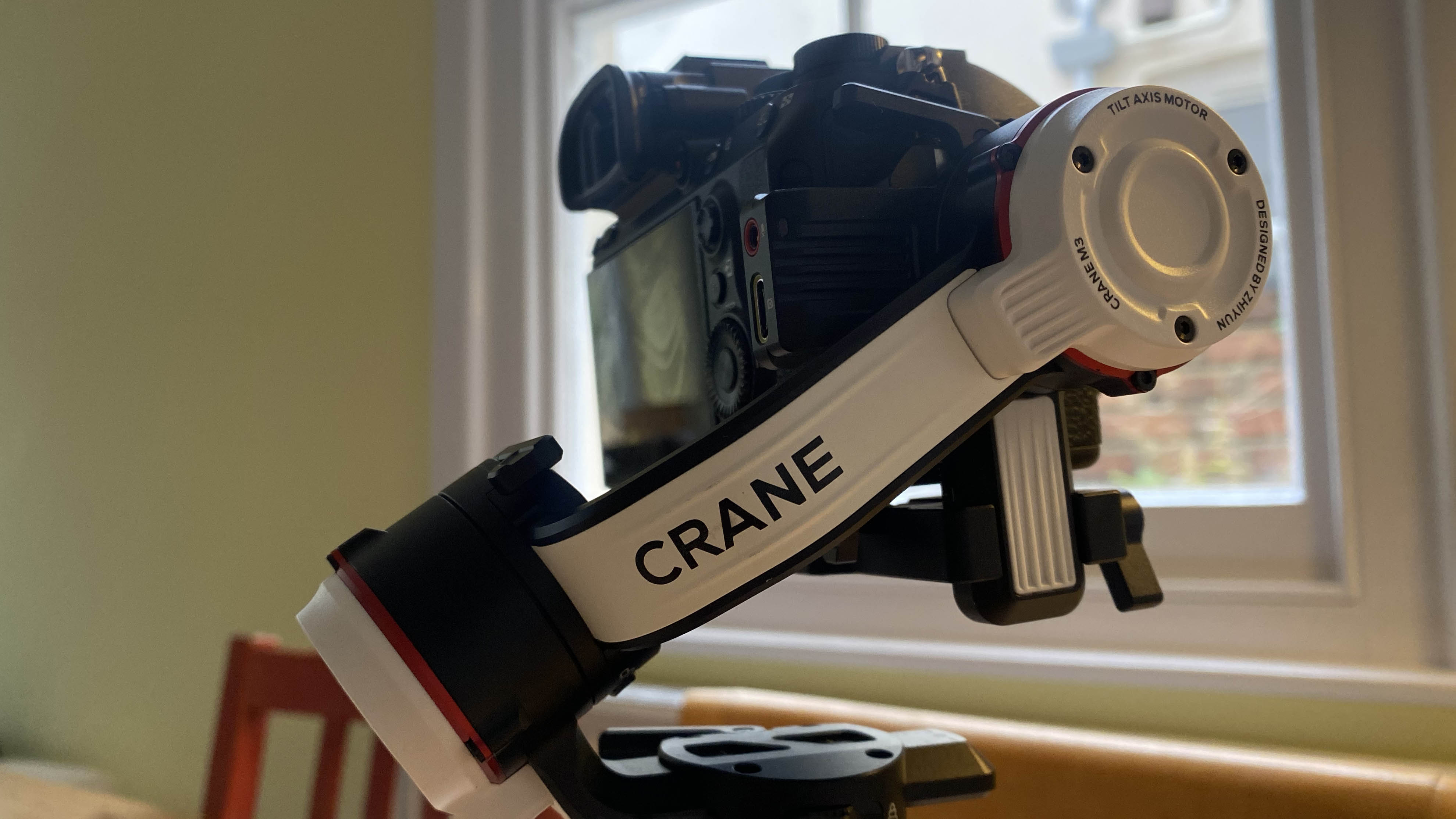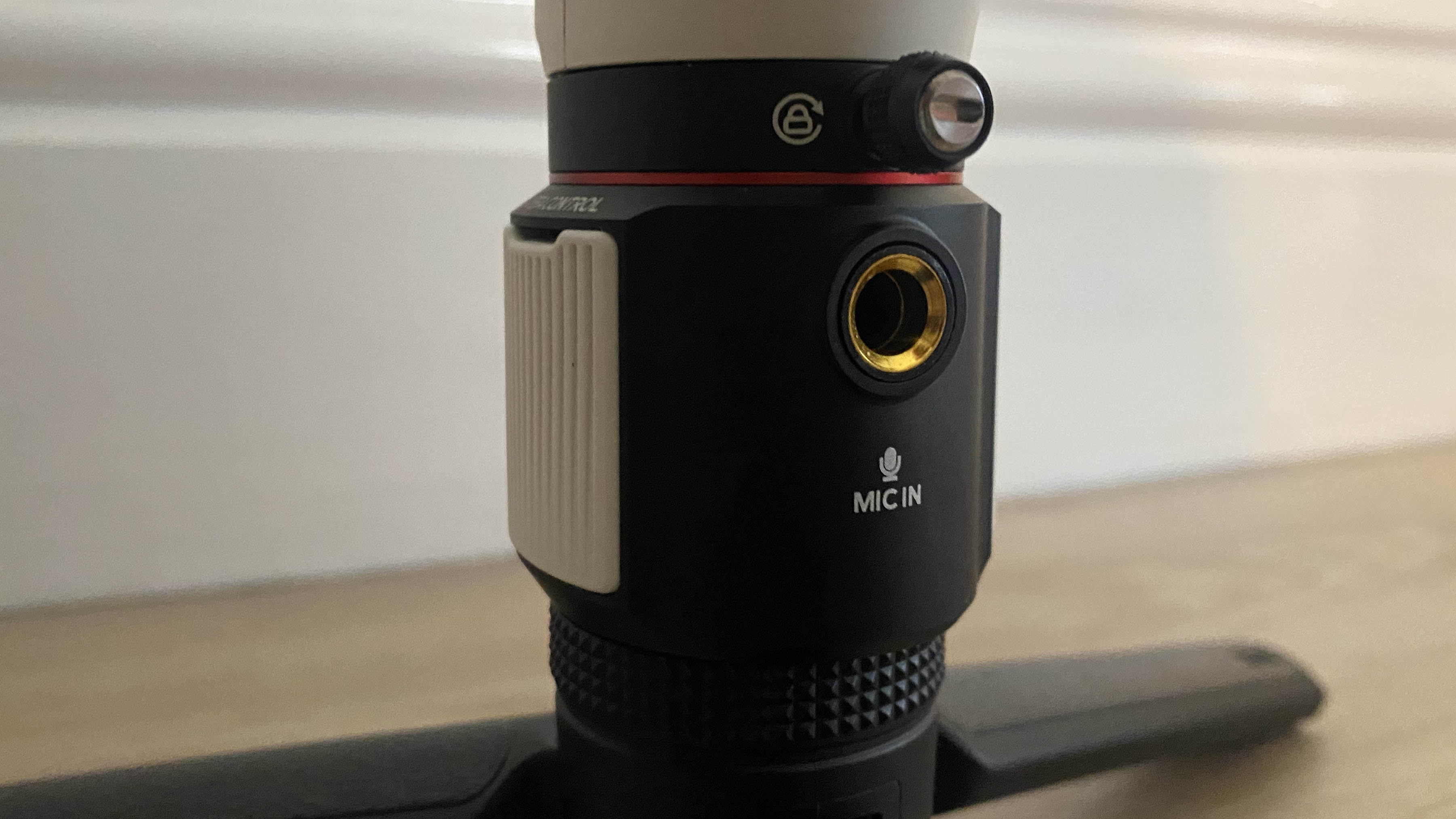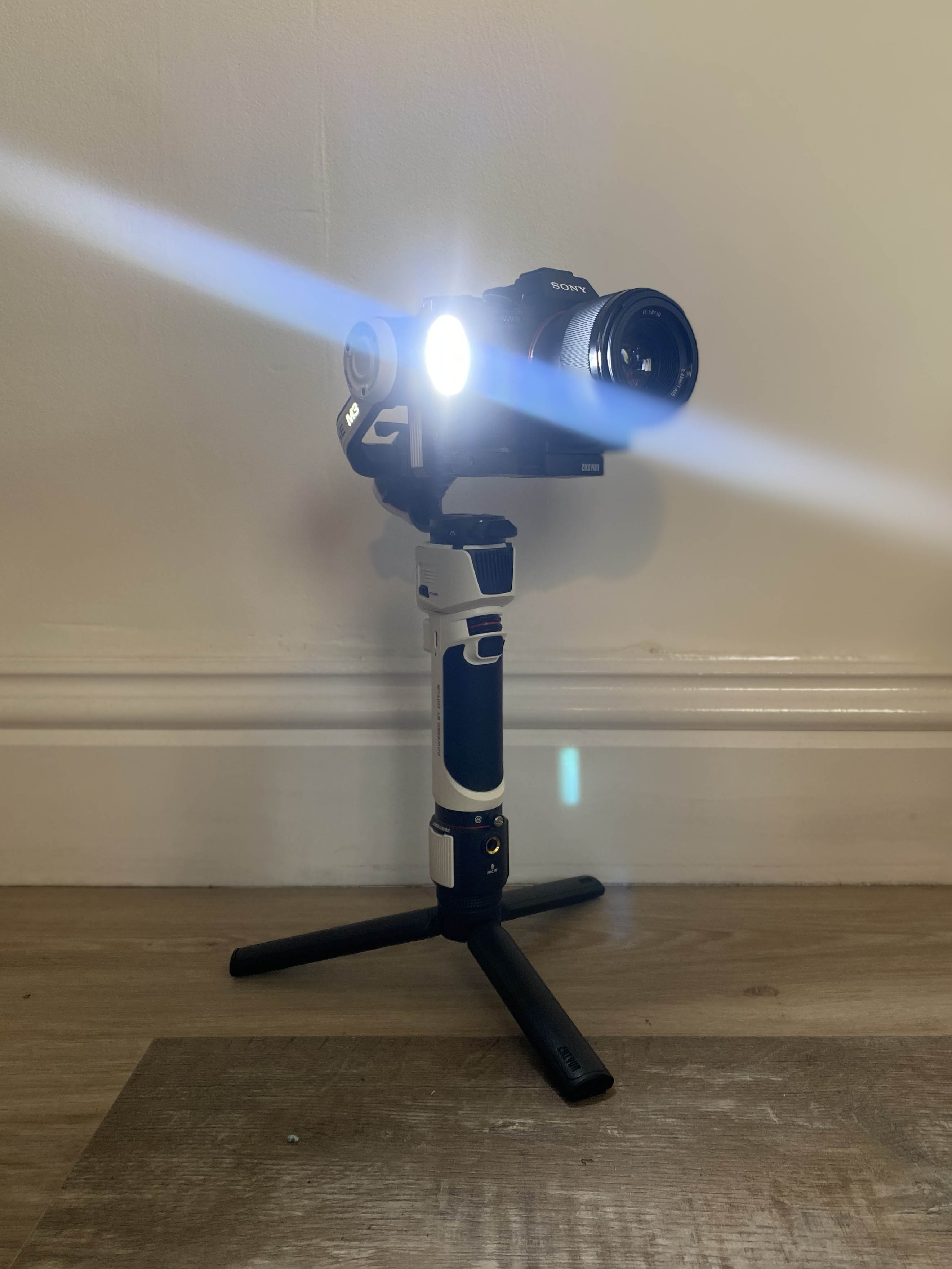Digital Camera World Verdict
The Zhiyun Crane M3 gimbal at first seems like an impressive bit of kit – it's smaller and more lightweight than most other gimbals for mirrorless cameras, and it benefits from a stylish white finish. The buttons and joystick are perfectly placed so that you can easily control the gimbal, and the handle fits nicely in your hand. However, it isn't the easiest gimbal to balance and it has some difficult adjustment points. So if you want to frequently change lenses you'll spend a lot of time a) getting frustrated and b) trying to balance it.
Pros
- +
Small and lightweight
- +
Looks stylish
- +
Suits a variety of devices
Cons
- -
Hard to balance
- -
Fiddly to adjust
Why you can trust Digital Camera World
The standout feature of the Zhiyun Crane M3 (aside from the fact that it's white) is its compact design. When you first take it out of the matching carry case it comes in, the size of the gimbal is quite exciting. It's a lot lighter than the DJI RSC 2 so you'll be able to hold it for much longer without getting an achy wrist – a massive plus if you've ever had to use a gimbal for an extended period.
We also loved the fact that it's able to take a mirrorless camera, a phone or an action camera, which makes it the perfect all-rounder especially if you want it for traveling. It also means that no matter what device you choose to shoot on, you'll always achieve smooth, professional-looking video.
It comes with a built-in light that has three colored filters with it, and also has various modes including vortex and portrait mode. Everything about this gimbal seems great until it comes to balancing it, which is more than a little frustrating due to the clunky slide arms and stiff locks.
It probably won't make its way into our list of best gimbals, though it would be interesting to test it with a smaller camera or even a phone or action camera (we tested it with a Sony A7 III, which is a fairly typical camera body).
Zhiyun Crane M3: Specifications

Weight: 730g
Dimensions: 24.1 x 155 x 72.5mm (folded)
Payload: 2.2 kg
Power: Li-Ion, USB charging, charging time 1.5hrs
Battery life: Up to 8 hours
Charging time: 2 hours
App: ZY Play
Zhiyun Crane M3: Key Features
Unlike other gimbals that have a minimum and maximum payload, the Zhiyun Crane M3 is designed to work with camera phones, action cameras and mirrorless cameras. It comes with an adjustable phone mount that could fit a phone in as big as the new iPhone 13 Pro Max.
It also benefits from a built-in light capable of 800-lumen output, which is perfect for those moments where you need just a little more light and don't want to add extra weight by using an external LED panel. You can turn it on by holding down the wheel on the side and then change the brightness by rolling it up or down.
The M3 also comes with an expansion base that can be screwed into the bottom of the gimbal. This includes a camera control port, a 6.5mm microphone input and a 1/4-inch screw. It seems like a helpful device, but we're not sure why the mic input isn't the standard 3.5mm jack you would find on a camera.
Zhiyun Crane M3: Handling and usability
To use any gimbal, you need to start by balancing it. Following the instructions provided by Zhiyun, we set about balancing the three axes – pan, tilt and roll. First we balanced the tilt axis, which was pretty straightforward – just a case of moving the camera backwards and forwards until you find that sweet spot and the camera stays balanced to the ground.
Next up was the vertical balance of the tilt axis which is where we ran into our first issue: the rubber viewfinder on the camera would hit the back of the roll axis, and we couldn't properly balance it.
The second issue we faced when adjusting the vertical tilt was using the spring-loaded screw to loosen the level mount. It felt like you almost needed three hands to complete the action – one to hold the gimbal, one to hold the camera in the correct position and one to untighten, twist the screw and move the camera up or down on the axis. We never managed to get the gimbal to balance with the lens facing use but found you could still use the gimbal regardless.

None of the axes move particularly smoothly and the locking arms is quite stiff – almost so stiff that you feel like you might knock the balance when trying to lock them.
Adjusting the pan and roll axes was much easier, and what you would expect from a gimbal. It was simply a case of moving the gimbal up and down or left and right then locking it into place.
Once the gimbal is finally set up, it's easy to use and offers smooth, seamless movements. There are different modes you can select including pan follow, lock, follow, POV, Vortex and Portrait. You can also use the joystick to move the camera. All movements had to be pretty steady, though, otherwise you would risk knocking one of the slide arms with part of the camera. While for the most part that's fine, if you want to be really creative with your shots you might need to be able to do quick, moving transitions.
One of the big advantages of the M3 over other gimbal systems is that you are able to swap the camera batteries without having to rebalance – which is a good job considering what a long, frustrating process it can be. The last thing you want on a shoot is to be spending as much time balancing it as you are shooting with it. If you just plan on shooting with one lens, you can pack down the gimbal in 'half storage' mode, which means when you want to shoot again you can just attach your camera and go.
The display on the Zhiyun Crane M3 is a bright, 1.2-inch touchscreen that is responsive and bright. It makes it easy to navigate around the menu systems, and to go back you simply swipe toward the left of the screen.
Zhiyun Crane M3: Verdict

At first glance the Zhiyun Crane M3 makes you want one. Not only does it stand out from other gimbals thanks to its white, black and red finish, it also feels really nice in your hand due to its weight. However, when you start to use the gimbal you realize why DJI gimbals are so popular. It was a frustrating process trying to get the gimbal balanced on all three axes, especially as the sliding arms weren't very smooth and the locking mechanisms were really tight.
If you're a videographer who works with multiple devices, this gimbal would be a good choice – but if you are looking for something that is easier to balance (which is especially important if you change lenses a lot) there are better options out there. While the size of the handle is nice, the sliding axis feels a little small to deal with some of the bigger cameras it's compatible with.
If the size of the gimbal handle was kept the same, but the space between the sliding axis was slightly bigger, we would rate the gimbal a lot higher. The fact we couldn't get it to balance as instructed without the rubber viewfinder hitting the gimbal put it down a peg or two.
Read more:
Best gimbals
Zhiyun Smooth Q3 gimbal review
Zhiyun Smooth X gimbal review
Manfrotto MVG220 gimbal review

Having studied Journalism and Public Relations at the University of the West of England Hannah developed a love for photography through a module on photojournalism. She specializes in Portrait, Fashion and lifestyle photography but has more recently branched out in the world of stylized product photography. Hannah spent three years working at Wex Photo Video as a Senior Sales Assistant, using her experience and knowledge of cameras to help people buy the equipment that is right for them. With eight years experience working with studio lighting, Hannah has run many successful workshops teaching people how to use different lighting setups.

